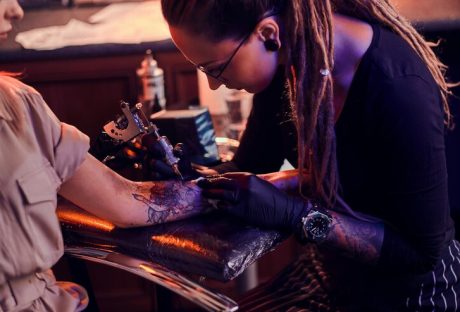change everywhere around us. While Fashion changes as the season changes and along with it, our wardrobe demand renewal too. Every season has its own shade of colours and as a new season comes along, we see the colour combinationse winter is more about dark and neutral colours, summer time is the time for bright and cheerful colours. No matter how many clothes we own, it is never enough. With each passing season, we need to buy a few outfits and that’s how we build our wardrobe. While purchasing clothes, remember some of them are long lasting and can be worn anytime of the year, so it makes more sense to invest money in these clothes. On the other hand, trendy clothes tend to be in fashion for one season post which they must to be discarded, so it makes sense to buy cheaper ones. As we are in the midst of summer season now, this season is looking forward to its heat, parties, vibrant atmosphere and amazing wardrobe collections. In this post, we will advise you on what colours to wear this summer season. Remember, the colours you wear symbolise your mood and what you are trying to express, so choose them with care
Black
You may wonder, black in summer? But believe me! If you are heading for a party, there is nothing like black. When in doubt, you will definitely not regret wearing black. For this summer season, women can opt for a lacy black dress along with with a black or golden sling bag and gold coloured earrings. Men can wear nice black shirts for formal functions. Check the classic black polo shirt for men from Woodhouseclothing.com which can be worn at a formal function as well as for some casual outing with friends.
Read also: Classic Dresses: The Little White Dress
Teal
Teal, a shade of green, is a different colour as it looks refreshing and classy. A lot of accessories for women come in this colour which can be paired with multiple outfits. Pairing a teal coloured cardigan with a white tank top and white jeans will give a very casual and refreshing summer look. Men can buy teal coloured T-shirts which can be worn with shorts for a casual day at the beach.
Tan
If you can think of any season to wear this colour shade, it is the summer season. Beige and tan coloured clothes are extremely popular in summer. This colour reminds us of the people who would for horse-ridings wearing tan coloured boots. Women can buy tan coloured fringe tops or flip flops whereas men can try tan shoes and boots.
Yellow
Yellow is the colour for this season, especially lemon or lime yellow, which comes with a hint of green and is absolutely bright. Ladies can choose a bright yellow summer dress along with a hat. Or they can buy yellow coloured accessories like a satchel or wedges. As bright as this colour is, it is a treat to the eyes as it enhances the beauty of the person wearing it. Men can wear yellow coloured slim shirts in offices as well as for parties.
Blue
Blue is an evergreen colour and many people choose to wear blue as it appears calm and cool. Pastel blue coloured dress can be worn by women for beach parties whereas men can wear light blue collared shirts in the office. A lot of accessories also come in this colour, hence mixing and matching must not be a problem for women. A blue coloured watch will look absolutely trendy with T-shirts.
Coral
Coral is a shade of orange and pink that looks very lively, festive and perky. Women can wear coral coloured tops and wedges along with white bottoms and dangling earrings in office. Men, on the other hand, can buy coral coloured shirts and pair them with white bottoms.
Red
Red is another bright colour which makes a person look very lively. It is the colour that indicates glamour and sensuousness and hence, women can wear red colour for date-nights since it looks really sexy. They can choose from red satin dresses or high-low cut dresses which will give a very feminine look for dates. Men, on the other hand, can choose to wear red checks shirts for formal wear or plain red shirts of some shiny material for party wear.
Along with the colour of the cloth you choose to wear, fitting is an important parameter which plays a vital role. When buying online, ensure that you have read the size charts well. A tailored suit will almost always look the best of men, so when you order online, make sure that you have accurate measurements. The women apart from the colour should also take into consideration their body shape and order clothes accordingly. A dress with a beautiful colour that accentuates your curves in the right places will make you look ravishing.






















